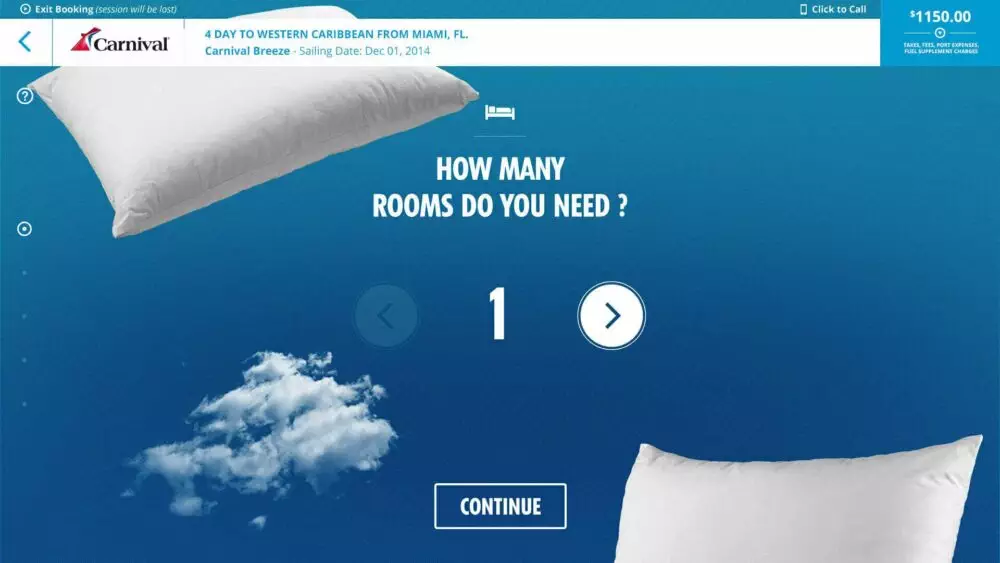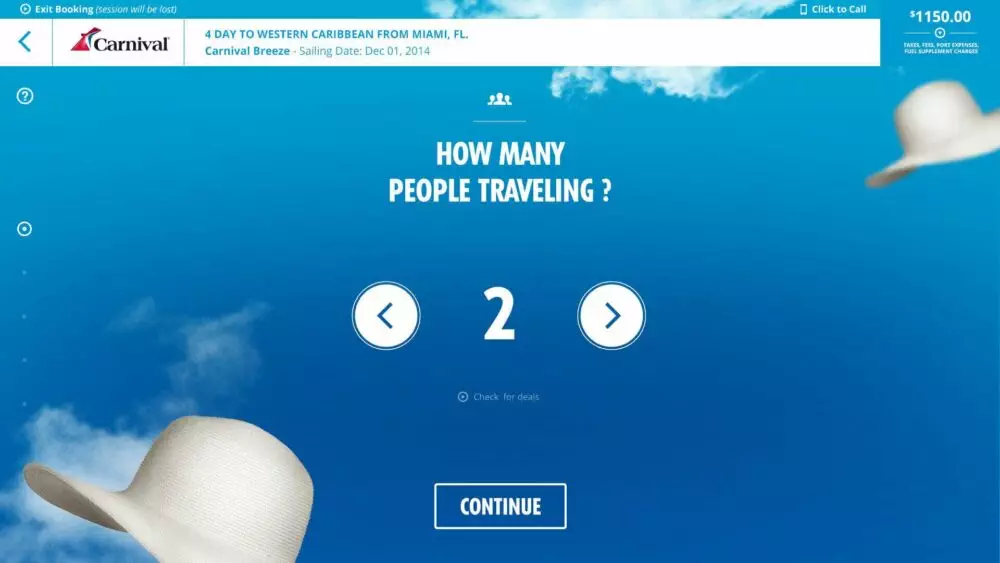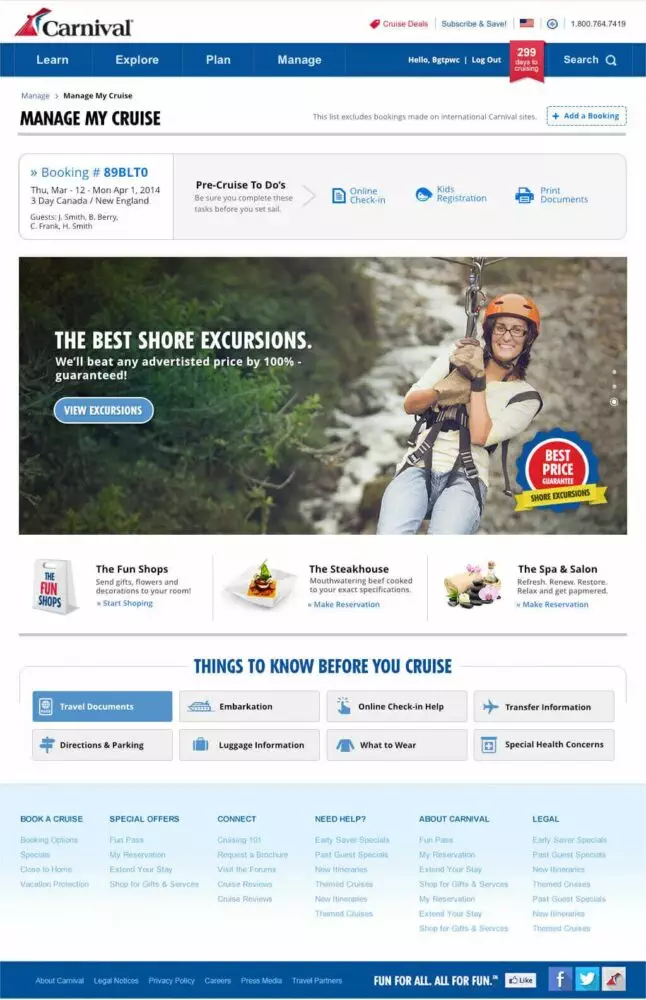- Carnival Cruise Line
Design Tools
- InDesign
- Adobe Photoshop
- Adobe Illustrator
- Whiteboards
- Notebook
Deliverables
- Wireframes
- Designs
Carnival Cruise Booking Engine Redesign: Enhancing the User Journey
Carnival Cruise Line, the world’s largest cruise line, serves over 21 million passengers annually. With 11 ships operating around 50 cruises weekly, the company needed a booking engine redesign to address customer pain points and increase online bookings.

Discovery Phase: Uncovering Key Client Challenges
During our discovery phase, we identified key reasons why bookings were underperforming.
Through research and testing, we found that clients were overwhelmed by the extensive amount of information presented at once. This confusion often led to booking abandonment.
Competitive Analysis:
Our competitor analysis revealed that similar challenges were faced by other major cruise lines, making it clear that streamlining information and improving navigation were critical.
Design Strategy: Simplifying the Experience for Better
After gathering and analyzing the data, we brainstormed key questions to guide our design strategy:
- How can we reduce content while still conveying critical information?
- Can we make the interface more intuitive?
- What features will best engage users?
Our primary goals were to:
- Reduce booking abandonment rates
- Increase engagement
- Provide contextual information with ease
Proposed Solution:
We recommended a vertical scrolling, full-page design, providing a clear and engaging booking journey with contextual information available at a glance.

Client Experience and Visual Design
To further enhance the experience, we developed a visual booking interface that maps the entire ship, guiding customers smoothly at every step.
This provided users with clarity and confidence during the booking process.



Early Design Concepts
In the early design stages, we explored a creative concept featuring floating objects such as pillows, hats, and flip-flops, which parallaxed down to the ship against a sky-blue background.
While visually engaging, the concept lacked key functionalities and was ultimately revised.


Next Steps:
The revised design direction retained some elements of this creative exploration, allowing us to move forward efficiently while focusing on functionality.



Project Summary
Launched in 2015, the redesigned booking engine achieved its primary objectives of increasing online bookings and reducing cancellations for Carnival Cruise Lines. The project also earned several industry awards, demonstrating its success.
Despite multiple updates since launch, several core features remain integral to Carnival’s booking experience, validating the strength and durability of the original design strategy.


